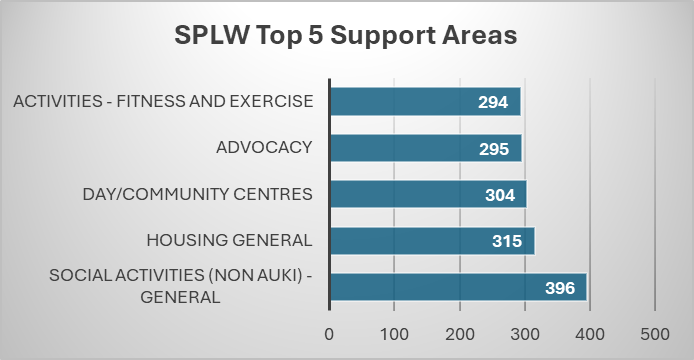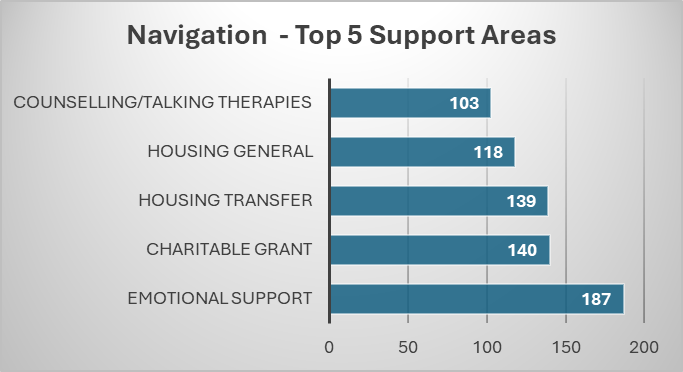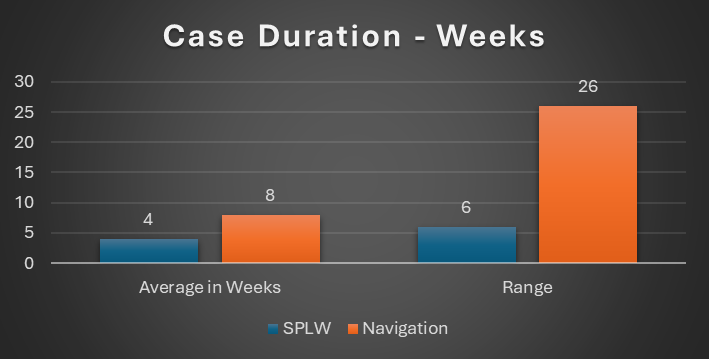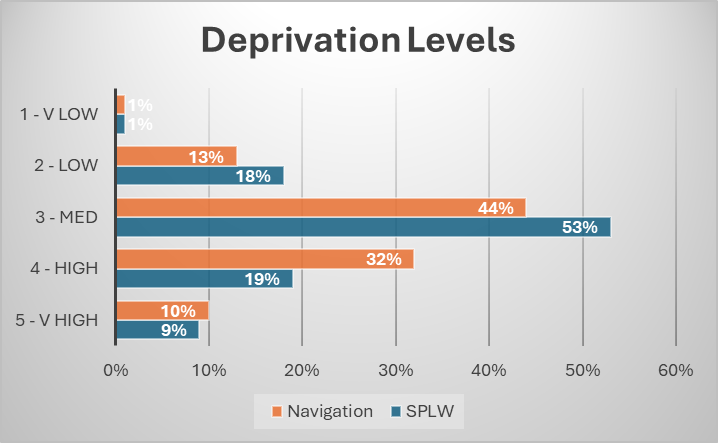Social prescribing and Navigation: 5 graphs showing variances between the services

Michael O'Dwyer, Head of Services - Personalised Care & Support, Age UK Islington says "Some distinct differences are clear from looking at the data - both between the clients that use the service and how the services differ to meet their needs."
The first two charts look at the support areas and how these contrast between the two services. The third (Case Duration) demonstrates the complexity of a case, with the Navigation service usually spending longer working with a client compared with the SPLW service.
The 'complexity of a situation' could either be to do with the number of issues that a client is having to deal with which become overwhelming or it could be socio-psychological barriers such as language barriers, frailty, mental health issues, learning disabilities, drug and alcohol problems, a lack of confidence or a combination of these issues.
Support Areas


Case Duration

Age and Deprivation Levels
The below demographics are key areas where there are significant differences between SPLW and Navigation. It shows how Navigation works primarily with people who live on their own and / or are an older client group living with higher levels of deprivation leading to increased health inequalities.


For more information
If you have any thoughts about this article or if you're interested in finding out more about Age UK Islington services, please contact Michael O'Dwyer, Head of Service - Personalised Care & Support, Age UK Islington.
Go back to Age UK Islington - Insight menu page.
